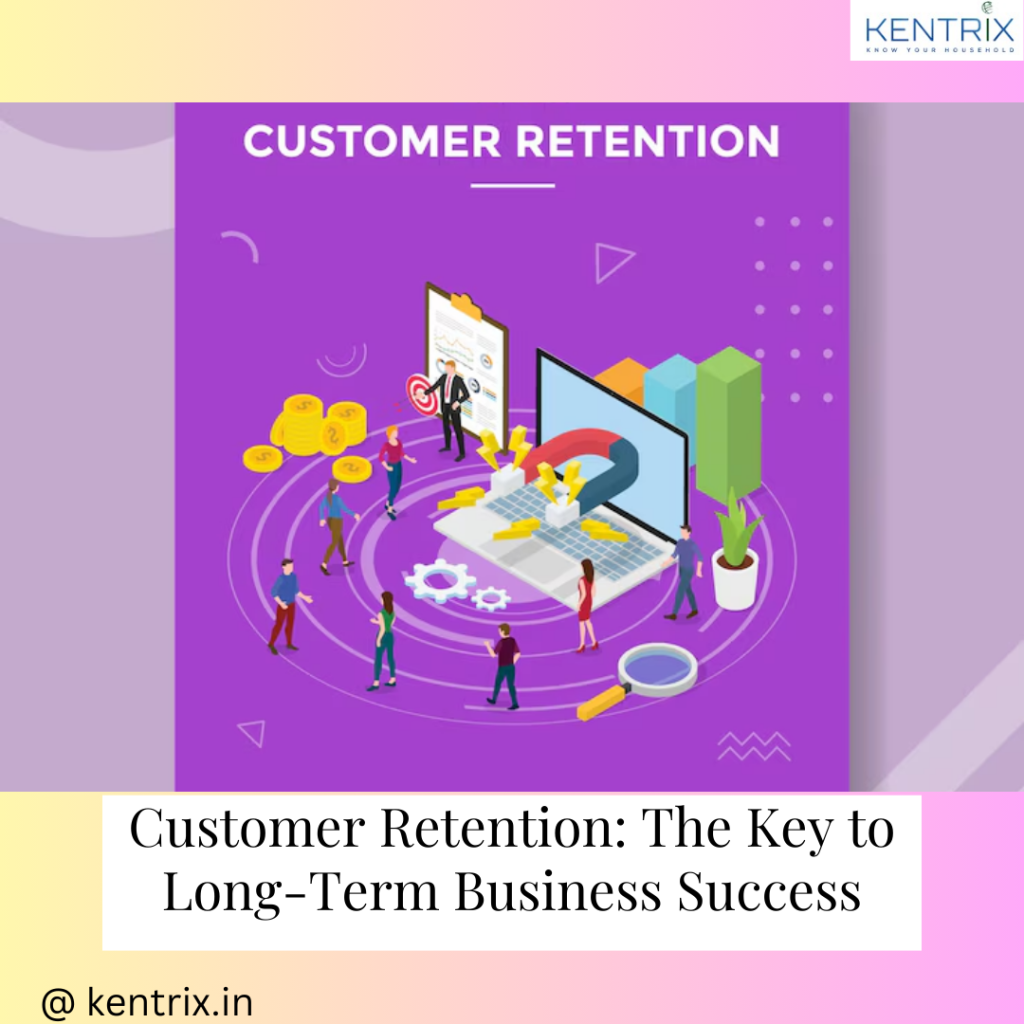Introduction
In today’s highly competitive market, businesses are constantly seeking ways to grow and sustain their operations. While acquiring new customers is often seen as the primary path to growth, retaining existing customers is equally, if not more, important. Customer retention is the practice of keeping customers engaged and satisfied, encouraging them to continue doing business with your company over the long term. In this article, we will explore the importance of customer retention, the key metrics to measure it, and the strategies that can help businesses improve their retention rates.

Understanding Customer Retention
Customer retention is the adeptness of a company to continue doing business with its customers over a period of time. It is a measure of customer loyalty and satisfaction, indicating how likely customers are to return to your business after their initial purchase. Unlike customer acquisition, which focuses on attracting new customers, retention is about nurturing the relationships you already have. This is crucial because it is generally more cost-effective to retain existing customers than to acquire new ones.
Key Metrics for Measuring Customer Retention
To effectively manage and improve customer retention, it’s essential to track the right metrics. Listed below are the most important ones:
Customer Retention Rate (CRR): This metric measures the percentage of customers the company is able to retain over a specific period. A high retention rate indicates strong customer loyalty.
Customer Churn Rate: The churn rate represents the percentage of customers who stop doing business with you during a given period. Reducing churn is a key goal in customer retention strategies.
Lifetime Value (LTV): This metric estimates the total revenue a business can expect from a customer throughout their entire relationship. Increasing LTV is a primary benefit of effective retention strategies.
Repeat Purchase Rate: This measures how often customers make repeat purchases from your business. A high repeat purchase rate indicates customer’s loyalty and satisfaction.
Also Read : Customer Segmentation Strategies for Small Businesses
Benefits of Focusing on Customer Retention
Investing in customer retention offers numerous advantages:
Cost-Effectiveness Compared to Acquisition: Acquiring new customers can be expensive due to marketing and sales efforts. Retaining customers is typically more cost-effective, as you’ve already invested in acquiring them.
Increased Customer Lifetime Value: Loyal customers tend to spend more over time, increasing their overall value to your business.
Positive Word-of-Mouth and Referrals: Satisfied customers are more likely to recommend your business to others, leading to organic growth through referrals.
Enhanced Brand Loyalty and Advocacy: Customers who feel valued and appreciated are more likely to become brand advocates, promoting your business to their networks.
Common Challenges in Customer Retention
Despite the clear benefits, businesses often face challenges in retaining customers:
Identifying At-Risk Customers: Recognizing when customers are at risk of leaving is crucial for taking proactive steps to retain them.
Managing Customer Expectations: Ensuring that your products or services consistently meet or exceed customer expectations is key to retaining them.
Personalization and Customer Experience: Customers expect personalized experiences, and failing to deliver can result in disengagement.
Competition and Market Saturation: In a crowded market, customers have many options, making it easier for them to switch to competitors.
Strategies for Improving Customer Retention
To overcome these challenges, businesses can implement the following strategies:
Providing Exceptional Customer Service:
Excellent customer service is the cornerstone of customer retention. Ensuring that your customers feel heard, valued, and supported will go a long way in keeping them loyal.
Personalizing Customer Interactions:
Tailoring your communications and offerings to individual customer needs and preferences can enhance the overall customer experience and encourage repeat business.
Implementing Loyalty Programs:
Rewarding customers for their loyalty through points, discounts, or exclusive offers can incentivize them to continue choosing your brand.
Regularly Engaging with Customers:
Consistent engagement, whether through email, social media, or other channels, helps keep your brand top of mind and strengthens customer relationships.
Soliciting and Acting on Customer Feedback:
Actively seeking feedback from your customers and making improvements based on their suggestions shows that you value their opinions and are committed to providing the best possible experience.
Role of Technology in Customer Retention
Technology plays a critical role in modern customer retention strategies:
Customer Relationship Management (CRM) Systems:
CRMs help businesses manage customer data, track interactions, and automate follow-ups, making it easier to maintain strong relationships.
Data Analytics for Customer Insights:
Analyzing customer data allows businesses to identify trends, preferences, and potential issues, enabling more informed decision-making.
Automation and AI in Customer Engagement:
Automated tools and AI can help deliver personalized experiences at scale, from customized email campaigns to proactive customer support.
Personalized Marketing Campaigns: Leveraging customer data to create targeted marketing campaigns can significantly increase engagement and retention.

Importance of Customer Experience in Retention
An exceptionally great customer experience is essential for retention:
Creating a Seamless Omnichannel Experience:
Ensuring consistency across all customer touchpoints, whether online or offline, helps create a smooth and enjoyable experience.
The Role of Consistent Communication:
Regular, meaningful communication keeps customers engaged and informed, reducing the likelihood of them switching to competitors.
Reducing Customer Effort in Interactions:
Simplifying processes and minimizing the effort required for customers to interact with your business can enhance their overall experience and satisfaction.
Case Studies of Successful Customer Retention
Amazon’s Prime Membership:
Amazon has built a highly successful customer retention strategy around its Prime membership, offering exclusive benefits such as free shipping and access to streaming services, which keep customers loyal to the platform.
Starbucks Rewards Program:
Starbucks’ loyalty program encourages repeat purchases by offering points for each purchase, which can be redeemed for free products.
Apple’s Ecosystem Strategy:
Apple’s seamless integration across its devices and services creates a cohesive ecosystem that makes it difficult for customers to switch to competitors, resulting in high customer retention rates.
Customer Retention in the Digital Age
The digital age has transformed customer retention strategies:
Impact of Social Media on Customer Retention:
Social media platforms allow businesses to engage with customers in real time, fostering stronger relationships and loyalty.
Mobile Apps and Their Role in Retention:
Mobile apps provide a convenient way for customers to interact with your brand, offering personalized experiences and easy access to products or services.
Evolving Customer Expectations in the Digital Era: Today’s customers expect fast, personalized, and seamless experiences. Meeting these expectations is crucial for retaining them in a digital-first world.
Also Read : How Geospatial Analytics Can Transform Your Marketing Strategy
Building Long-Term Relationships with Customers
Long-term customer relationships are built on trust and consistent value delivery:
The Importance of Trust and Transparency:
Being honest and transparent with your customers fosters trust, which is essential for long-term retention.
Delivering Consistent Value Over Time:
Continuously providing value to your customers ensures they see the benefit of staying loyal to your brand.
Engaging Customers Beyond Transactions:
Building relationships beyond mere transactions, such as through community involvement or personalized content, helps deepen customer loyalty.
The Importance of Employee Training in Customer Retention
Employees play a crucial role in customer retention:
Empowering Employees to Deliver Exceptional Service: Training and empowering employees to provide excellent customer service directly impacts customer satisfaction and retention.
Ongoing Training and Development Programs: Regular training ensures that employees stay updated on the best practices and tools for customer engagement.
The Impact of Employee Satisfaction on Customer Retention: Happy employees are more likely to deliver positive customer experiences, which in turn drives customer retention.
Monitoring and Adapting Retention Strategies
Retention strategies should be continuously monitored and adapted:
Continuous Improvement Based on Customer Feedback: Regularly gathering and acting on customer feedback helps businesses refine their retention strategies over time.
Adapting to Changing Market Conditions: The market is constantly evolving, and businesses must stay agile, adjusting their strategies to meet new challenges and opportunities.
Measuring the Impact of Retention Efforts: Tracking the effectiveness of your retention strategies through key metrics helps ensure they are delivering the desired results.
The Future of Customer Retention
As technology and customer expectations evolve, so too will customer retention strategies:
Emerging Trends in Customer Retention: Trends such as hyper-personalization, subscription models, and AI-driven customer support are shaping the future of customer retention.
The Role of Artificial Intelligence and Machine Learning: AI and machine learning are increasingly being used to predict customer behavior, personalize interactions, and optimize retention efforts.
Conclusion
Customer retention is crucial for long-term business success. By understanding the importance of retaining customers, tracking key metrics, and implementing effective strategies, businesses can build strong, lasting relationships with their customers. As we move into the future, staying ahead of trends and leveraging technology will be crucial for maintaining high retention rates and ensuring continued growth.


